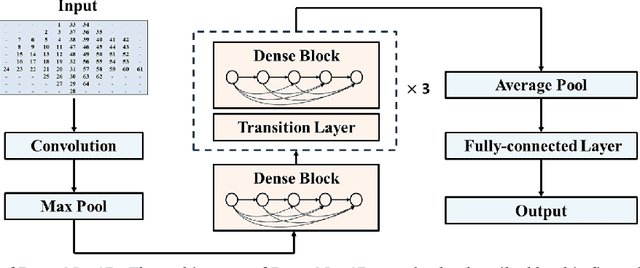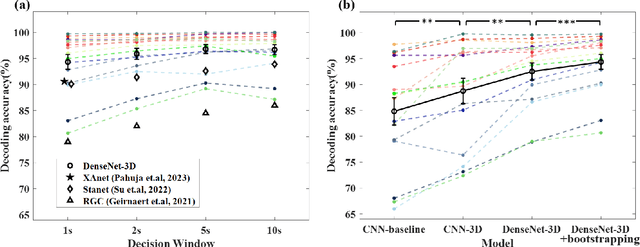A DenseNet-based method for decoding auditory spatial attention with EEG
Paper and Code
Sep 14, 2023


Auditory spatial attention detection (ASAD) aims to decode the attended spatial location with EEG in a multiple-speaker setting. ASAD methods are inspired by the brain lateralization of cortical neural responses during the processing of auditory spatial attention, and show promising performance for the task of auditory attention decoding (AAD) with neural recordings. In the previous ASAD methods, the spatial distribution of EEG electrodes is not fully exploited, which may limit the performance of these methods. In the present work, by transforming the original EEG channels into a two-dimensional (2D) spatial topological map, the EEG data is transformed into a three-dimensional (3D) arrangement containing spatial-temporal information. And then a 3D deep convolutional neural network (DenseNet-3D) is used to extract temporal and spatial features of the neural representation for the attended locations. The results show that the proposed method achieves higher decoding accuracy than the state-of-the-art (SOTA) method (94.4% compared to XANet's 90.6%) with 1-second decision window for the widely used KULeuven (KUL) dataset, and the code to implement our work is available on Github: https://github.com/xuxiran/ASAD_DenseNet
 Add to Chrome
Add to Chrome Add to Firefox
Add to Firefox Add to Edge
Add to Edge